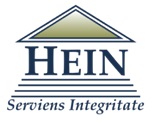Keywords
Competition Law, Public Antitrust Enforcement, Italian Competition, Authority, ECN+ Directive
Abstract
Almost fifteen years after its adoption, the system of decentralized enforcement laid down in Regulation 1/2003 has shaped competition law in a way that could hardly be predicted, in terms of both magnitude and quality of the activities of National Competition Authorities. More recently, the so-called ‘ECN+ Directive’ was adopted to address the shortcoming of such system, namely a perceived lack of independence and accountability of several NCAs and a certain degree of divergence within the European Competition Network. In this scenario, the Italian Competition Authority has frequently been depicted as a well-equipped, independent and effective enforcer and – with a few notable exceptions – the international debate concerning such reform has mostly overlooked its possible impact within the Italian legal system. This paper aims to assess whether, and to what an extent, the ECN+ Directive should affect the enforcement of competition law in Italy and, in particular, those fundamental guarantees of independence and effectiveness that form the core of the rule of law in the field of EU competition law. independent and effective enforcer and – with a few notable exceptions – the international debate concerning such reform has mostly overlooked its possible impact within the Italian legal system. This paper aims to assess whether, and to what an extent, the ECN+ Directive should affect the enforcement of competition law in Italy and, in particular, those fundamental guarantees of independence and effectiveness that form the core of the rule of law in the field of EU competition law.
Recommended Citation
Valentina, G. (2019). Competition Law Enforcement in Italy after the ECN+ Directive: the Difficult Balance between Effectiveness and Over-enforcement. Yearbook of Antitrust and Regulatory Studies, 12(20), 91-110. https://doi.org/10.7172/1689-9024.YARS.2019.12.20.3
First Page
91
Last Page
110
Page Count
19
Received Date
16.07.2019
Accepted Date
05.09.2019
DOI
10.7172/1689-9024.YARS.2019.12.20.3
Publisher
University of Warsaw








